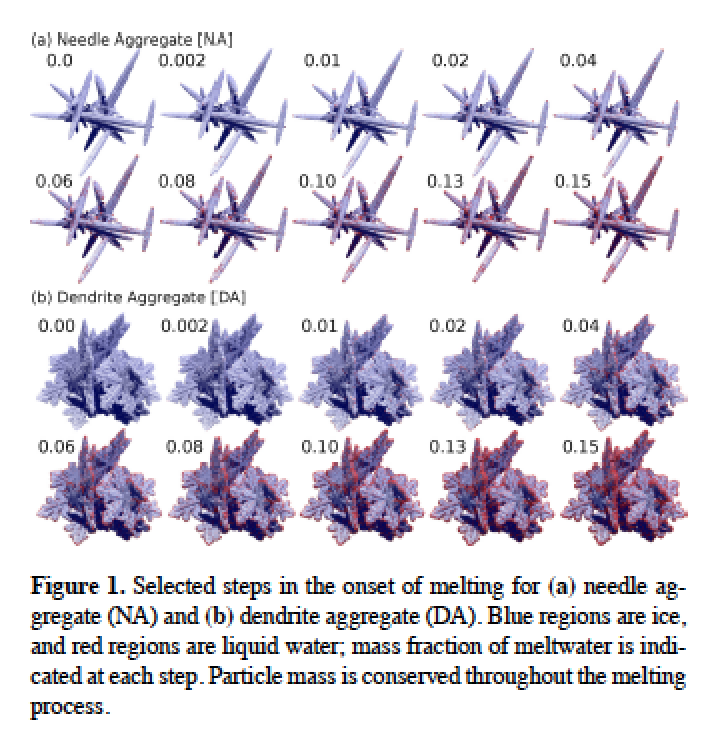|
News: Melting Precipitation Particles
|
 |
 |
Title: The microwave properties of simulated melting precipitation particles: sensitivity to initial melting
No two snowflakes are alike, as the saying goes, and these vast differences between particles mean that microwave remote sensors, like CloudSat, have to deal with the uncertainty of the properties of ice that they encounter, particularly when that ice starts to melt. Because CloudSat senses the amount of precipitation (water, ice, and everything in between) in clouds, it needs to effectively be able to understand the particles it’s looking at, and whether it is under- or over-estimating the liquid in clouds because of the melting ice particles’ heat-releasing (or radiative) properties.
Johnson et al. devised a model, called the Single Particle Melting Model (or SPMM) to simulate ice particles of any shape melting, and can simulate those particles at any stage, from totally frozen to a small puddle. This algorithm isn’t one that requires a super-computer, either; a normal desktop can simulate a single particle in just a few minutes. Beyond its practical implications, the SPMM looks totally cool (or maybe only partially cool, if it’s adjusting for melting).
To learn more, and see the methodology that went into designing the SPMM, read the full article here: http://dx.doi.org/10.5194/amt-9-9-2016
Synopsis Author: Kalina Velev, JPL

|